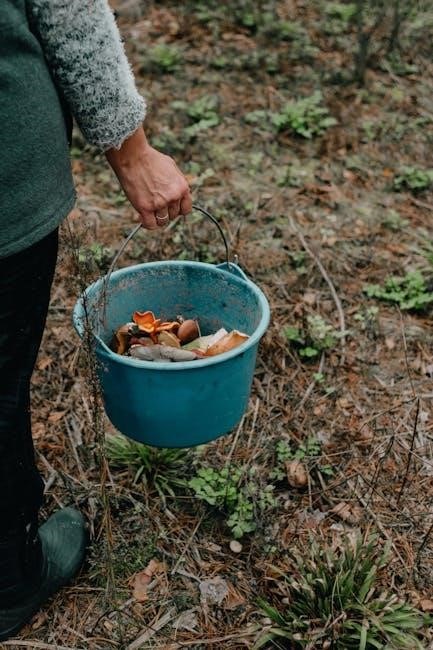Blue Willow china is a beloved antique, with guides like Gaston’s and Harman’s offering insights into its history, identification, and value, aiding collectors in authenticating and appraising pieces effectively․
1․1 Historical Background of Blue Willow Pattern
The Blue Willow pattern originated in 18th-century England, inspired by Chinese designs․ It depicts a romantic tale of star-crossed lovers, blending natural motifs like willow trees, bridges, and birds․ The design became wildly popular in the 19th century, particularly in the United States, where it was produced by prominent manufacturers like Spode and Adams․ The pattern’s timeless appeal lies in its delicate imagery and the sentimental story it conveys․ Over time, variations emerged, including pieces produced in Japan during the 1920s․ Collectors today prize Blue Willow for its historical significance and artistic charm․ Guides like Gaston’s and Harman’s provide detailed histories, helping enthusiasts understand the evolution and cultural impact of this iconic china pattern․
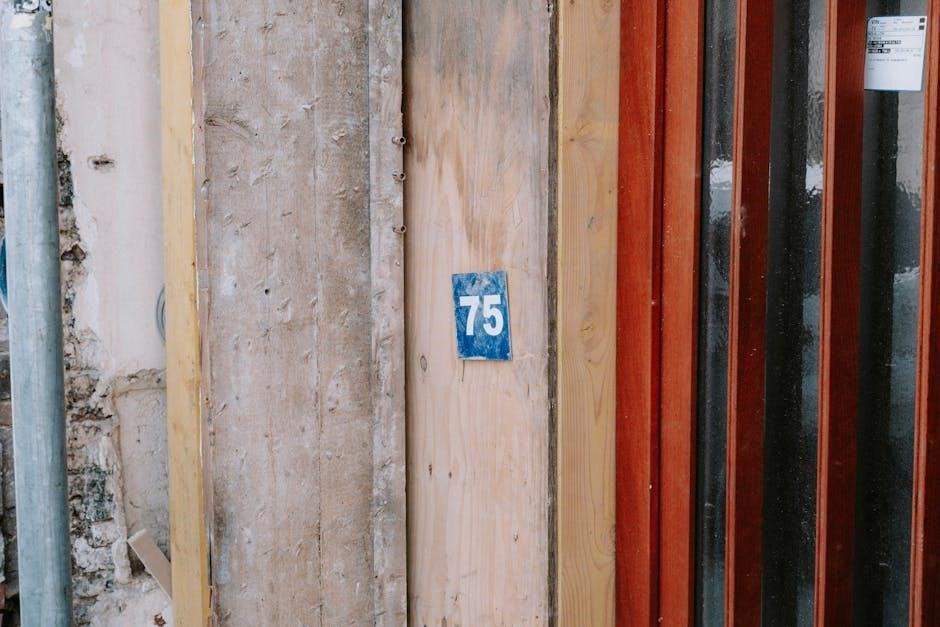
1․2 Popularity of Blue Willow Among Collectors
Blue Willow china has captivated collectors for generations due to its timeless beauty and rich history․ Its widespread production across various manufacturers and periods ensures a diverse range of pieces, from rare antiques to modern reproductions․ Collectors are drawn to the intricate designs, which often tell a romantic story, and the challenge of identifying authentic pieces․ The availability of comprehensive guides, such as Gaston’s and Harman’s, has democratized the hobby, making it accessible to both seasoned collectors and newcomers․ Additionally, the emotional connection to family heirlooms and the thrill of the hunt at thrift stores and auctions further fuel its popularity․ As a result, Blue Willow remains one of the most sought-after china patterns in the collecting world, offering both aesthetic and historical value․
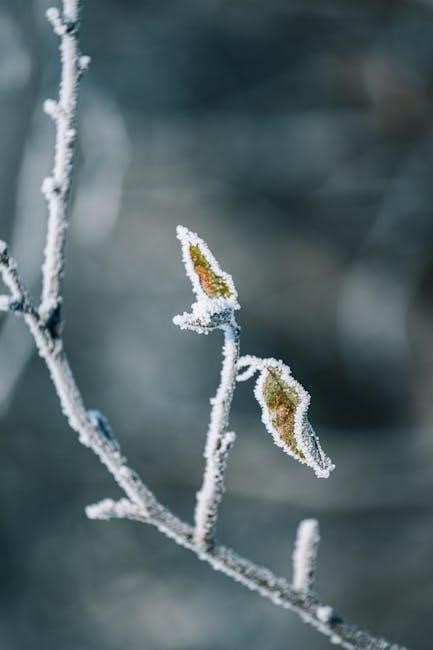
Key Elements for Identification
Blue Willow china is recognized by its distinctive willow tree, bridge, birds, and people motifs, typically rendered in cobalt blue on a white background․ The design’s balance and symmetry are key to identifying genuine pieces․
2․1 Understanding the Willow Pattern Design
The Willow pattern is one of the most iconic designs in ceramic history, characterized by its intricate and symbolic motifs․ Central to the design is the willow tree, often depicted near water, with a bridge, birds, and small figures․ These elements are thought to represent a romanticized Chinese landscape, blending nature and human activity․ The design’s balance and symmetry are key to its appeal, with the willow tree serving as a focal point․ The motifs are typically rendered in cobalt blue on a white background, creating a striking contrast․ Over time, the pattern has remained relatively consistent, with minor variations introduced by different manufacturers․ Understanding these design elements is crucial for identifying genuine Blue Willow pieces and appreciating their artistic and historical significance․ This consistency also helps collectors distinguish authentic items from reproductions or adaptations․ The Willow pattern’s enduring popularity lies in its timeless beauty and the story it tells through its imagery․
2․2 Identifying Blue Willow Colors and Variations
Blue Willow china is primarily recognized by its cobalt blue coloring on a white background, creating a striking visual contrast․ The iconic blue tone varies slightly depending on the manufacturer and era, ranging from deep navy to softer, more muted shades․ While blue is the most common and sought-after color, variations exist, such as red, green, and even purple willow patterns․ These alternate colors are less prevalent but still considered authentic․ Some pieces may also feature multi-color designs, blending additional hues like yellow or gold․ Collectors should be aware that modern reproductions often mimic the classic blue but may lack the depth and richness of older pieces․ Understanding these color variations is essential for authentication and determining the piece’s rarity and value․ Always examine the color consistency and quality when evaluating Blue Willow items․
2․3 Common Shapes and Forms in Blue Willow China
Blue Willow china is produced in a wide variety of shapes and forms, catering to both functional and decorative purposes․ Common shapes include plates, platters, serving dishes, teacups, saucers, and teapots, which reflect its origins in dining and tea culture․ Larger forms, such as tureens, soup bowls, and pitchers, are also prevalent․ Figurines, such as depictions of people, animals, and mythological creatures, are highly sought after for their intricate designs․ Decorative items like vases, candlesticks, and wall plaques showcase the pattern’s versatility․ Rare shapes, such as cylindrical jugs or footed bowls, can command higher values due to their scarcity․ Collectors should also note that certain shapes were produced during specific time periods or by particular manufacturers, making them more valuable․ Understanding these forms is crucial for identifying authentic pieces and building a well-rounded collection․

History of Blue Willow China
Blue Willow China is an iconic English ceramic pattern inspired by Chinese porcelain, popularized in the 18th century․ Its enduring appeal lies in its timeless design and historical charm․
3․1 Origins of the Blue Willow Pattern
The Blue Willow pattern has its roots in 18th-century English ceramic design, heavily influenced by Chinese porcelain․ The pattern is believed to have been inspired by a romanticized Chinese fable involving a willow tree, a bridge, and two lovers separated by societal constraints․ This narrative, combined with the popularity of Chinoiserie, led English potters to adapt and refine the design․ The iconic imagery includes a willow tree, a bridge, two birds, and water, symbolizing continuity and longing․ The first known production of Blue Willow was by Thomas Turner of Caughley Pottery in the 1780s․ Its success stemmed from its affordability and the appeal of its exotic, yet familiar, aesthetic․ The pattern quickly became a staple in English ceramics, reflecting both cultural exchange and the rise of middle-class consumerism․ Its enduring charm lies in its timeless design and historical significance․
3․2 Evolution of Blue Willow Over the Centuries
Blue Willow china has undergone significant transformations since its inception in the late 18th century․ Initially, the pattern was hand-painted on pottery, featuring intricate details and vibrant blue hues․ By the 19th century, advancements in ceramic technology allowed for transfer printing, making the design more accessible and consistent․ Spode, a prominent pottery firm, played a key role in popularizing the pattern during this period; The 20th century saw the introduction of new materials and techniques, such as bone china and earthenware, which expanded the range of Blue Willow pieces․ Despite these changes, the core elements of the design remained intact, ensuring its timeless appeal․ Today, modern manufacturers continue to adapt the pattern while maintaining its historical essence, making it a beloved choice for both collectors and everyday use․
3․3 Notable Manufacturers of Blue Willow China
Several manufacturers have played a significant role in producing Blue Willow china, each contributing to its enduring popularity․ Spode, one of the earliest and most renowned firms, introduced the pattern in the late 18th century and perfected the transfer-printing technique․ Josiah Spode I is often credited with creating the iconic design․ Minton and Royal Worcester also produced high-quality Blue Willow pieces, incorporating intricate details and vibrant colors․ In the 20th century, companies like Johnson Brothers and Churchill China continued the tradition, offering a wide range of Blue Willow items․ These manufacturers ensured the pattern’s adaptability across various ceramic types, from earthenware to fine bone china․ Their contributions have helped maintain the timeless appeal of Blue Willow, making it a staple in both antique and modern collections․

Dating Blue Willow China
Dating Blue Willow china involves analyzing manufacturer marks, historical context, and design elements to determine its age and authenticity accurately․
4․1 Understanding Marks and Signatures
Understanding marks and signatures is crucial for dating Blue Willow china․ Most pieces feature backstamps or signatures that indicate the manufacturer and production date․ These marks often include the company name, logos, or phrases like “Made in England” or “Royal Worcester․” Early 19th-century pieces may lack specific dates but can be identified by characteristic patterns or color palettes; Over time, manufacturers like Spode, Johnson Brothers, and Butterworth developed distinctive marks that evolved․ Collectors should look for consistency between the mark and the piece’s style․ Variations in ink color or stamp quality can also hint at the era․ Some marks include codes or symbols that correspond to specific years or production lines․ Researching these details helps pinpoint the age of Blue Willow china, making it easier to authenticate and date accurately․ Always cross-reference marks with historical records or expert guides for reliability․
4․2 Dating Techniques for Blue Willow Pieces
Dating Blue Willow china involves a combination of techniques, starting with analyzing design details․ The Willow pattern has evolved over time, with early pieces featuring more hand-painted elements and later ones showcasing transfers with sharper lines․ Color intensity, such as the vibrancy of cobalt blue, can indicate age, as older pieces may show slight fading․ Historical context, like production dates of specific manufacturers, helps narrow down the era․ Collectors should also examine the piece’s condition; older items may exhibit wear or firing imperfections․ Additionally, researching auction records and reference books provides insights into when similar pieces were produced․ Combining these methods ensures a more accurate estimation of a piece’s age․ Always consult multiple sources to confirm findings, as dating Blue Willow china requires careful observation and historical knowledge․

4․3 Historical Context for Dating Blue Willow
Understanding the historical context is crucial for accurately dating Blue Willow china․ The pattern emerged in the late 18th century, influenced by Chinese porcelain designs․ Early pieces often featured hand-painted details and softer colors․ By the mid-19th century, advancements in transfer printing allowed for mass production, making Blue Willow more accessible․ The Victorian era saw a surge in popularity, with intricate borders and vibrant blues becoming common․ In the early 20th century, manufacturers like Spode and Royal Worcester introduced standardized marks, aiding in precise dating․ Post-WWII, production shifted to Asia, with newer pieces exhibiting sharper transfers and brighter hues․ Collectors should align their pieces with these historical milestones, considering production peaks and stylistic changes․ This timeline helps distinguish antique from modern reproductions, ensuring accurate dating within the evolving legacy of Blue Willow china․
Collecting Blue Willow China
Collecting Blue Willow China is a rewarding hobby, offering pieces rich in history and artistry․ Start by researching, then explore auctions, estate sales, and antique shops․
5․1 Where to Find Blue Willow Pieces
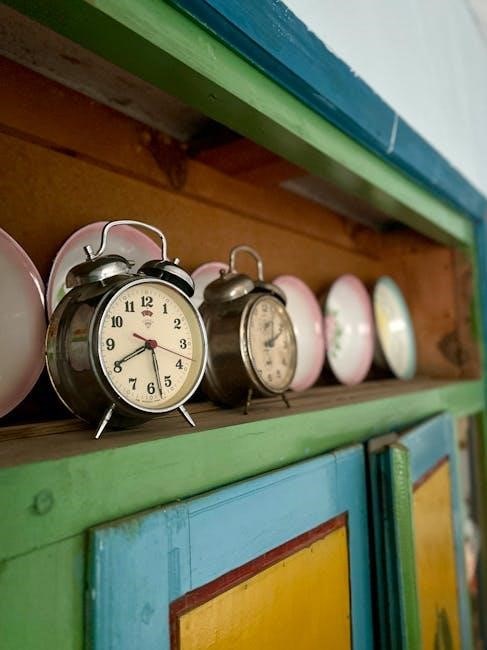
Blue Willow pieces can be found in various locations, including antique shops, estate sales, and auctions․ Online marketplaces like eBay and Etsy often feature Blue Willow china, but buyers should verify authenticity․ Flea markets and vintage fairs are also great sources for rare or unique items․ Collectors may discover hidden gems in thrift stores or charity shops, though such finds are less common․ Auction houses specializing in ceramics frequently list Blue Willow pieces, offering opportunities to bid on rare items․ Additionally, estate sales and auctions of deceased estates often include Blue Willow china, especially if the collection was amassed over generations․ For those seeking specific or rare pieces, joining collector communities or attending specialized collectible shows can provide leads․ Always research sellers and items thoroughly to ensure genuine purchases․
5․2 Tips for Evaluating Condition and Authenticity
Evaluating the condition and authenticity of Blue Willow china is crucial for collectors․ Start by inspecting the piece for any chips, cracks, or repairs, as these can significantly affect value․ Look for fading or wear in the blue pigment, which may indicate age or excessive use․ Check the pattern for consistency and clarity, as reproduction pieces often lack the fine details of authentic designs․ Verify the manufacturer’s marks or signatures, which can help confirm authenticity․ Use a magnifying glass to examine the glaze and painting technique, as genuine pieces typically exhibit superior craftsmanship․ Consult with experts or reputable appraisers if unsure, especially for rare or high-value items․ Finally, compare the piece against known examples to ensure it aligns with historical production standards․ This thorough approach helps distinguish genuine Blue Willow china from reproductions․
5․3 Building a Comprehensive Collection
Building a comprehensive Blue Willow collection requires a strategic approach․ Start by focusing on common pieces, such as plates, cups, and saucers, to establish a foundation․ Gradually seek rarer items like serving dishes or figurines to add depth․ Consider collecting across different manufacturers and time periods to showcase the pattern’s evolution․ Prioritize condition and authenticity, ensuring each piece is free from significant damage or repairs․ Set a budget and stick to it, avoiding impulse purchases․ Join collector communities or forums for guidance and networking opportunities․ Document your collection with photos and records for future reference or insurance purposes․ Display your collection thoughtfully, using proper storage and lighting to preserve its beauty․ Over time, your collection will reflect the rich history and timeless appeal of Blue Willow china․
Determining the Value of Blue Willow China
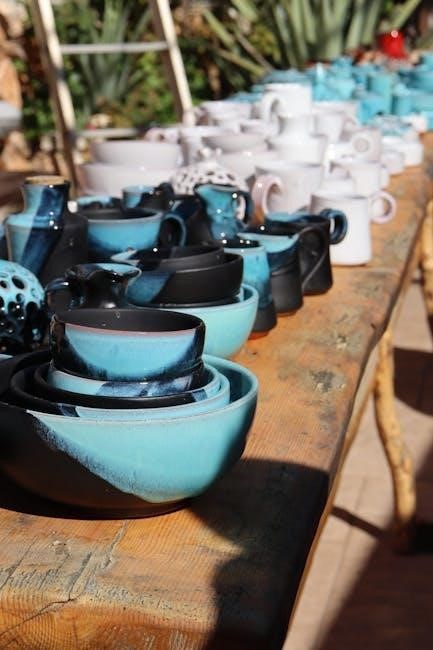
Determining the value of Blue Willow China involves evaluating rarity, condition, age, and provenance, as well as market demand and historical significance․
6․1 Factors Affecting the Value of Blue Willow
The value of Blue Willow China is influenced by several key factors, including rarity, condition, age, and provenance․ Rare or early pieces, such as those from the 18th or 19th centuries, often command higher prices due to their historical significance․ The condition of the item is critical; chips, cracks, or restoration can significantly lower its value․ Age also plays a role, with older pieces generally being more valuable than modern reproductions․ Provenance, or the history of ownership, can enhance value if the piece has notable origins․ Additionally, market demand and trends impact pricing, with certain patterns or shapes being more sought after by collectors․ Understanding these factors helps collectors and sellers accurately assess the worth of Blue Willow China in the marketplace․
6․2 How to Get Your Blue Willow Appraised
To ensure an accurate valuation of your Blue Willow China, consult a professional appraiser specializing in ceramics or antiques․ Start by gathering detailed documentation, including any historical records or receipts․ Provide high-quality images of the piece from multiple angles, highlighting the design, marks, and condition․ Consider visiting an appraiser in person or using reputable online appraisal services․ Many auction houses and antique dealers offer free or paid appraisals․ Additionally, organizations like the International Society of Appraisers can connect you with qualified experts․ Be prepared to discuss the item’s provenance, condition, and rarity․ A professional appraisal will provide a detailed report outlining the piece’s value, helping you make informed decisions for selling, insuring, or preserving your Blue Willow China․
6․3 Market Trends in Blue Willow Collecting
Market trends in Blue Willow collecting reveal a steady demand for rare and high-quality pieces, with prices increasing for items in excellent condition․ Collectors are particularly drawn to early examples with intricate designs and unique markings․ Online marketplaces have made it easier for collectors to discover and purchase Blue Willow china, contributing to its growing popularity․ Younger generations are also showing interest, driven by nostalgia and the desire for timeless decor․ Rare shapes, such as large serving platters or sauce boats, are highly sought after and often command premium prices․ Additionally, the rise of social media has created a vibrant community of collectors who share knowledge and drive interest in specific patterns․ As a result, Blue Willow remains a dynamic and evolving collectible, with its value influenced by both historical significance and modern trends․
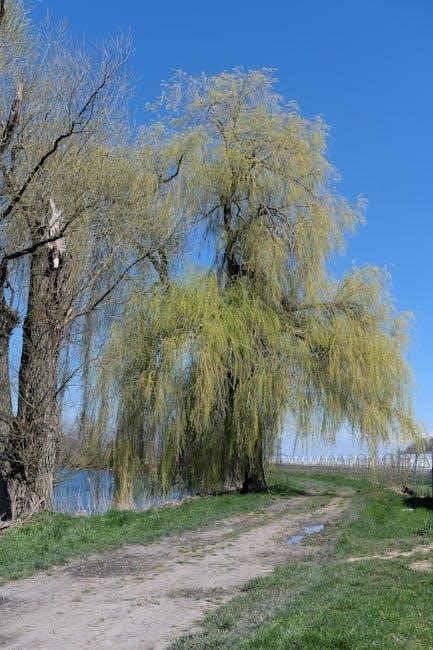
Common Mistakes to Avoid
Collectors often misidentify reproductions as antiques, overlook restoration, and overpay for common items, highlighting the importance of thorough research and expert authentication in Blue Willow collecting․
7․1 Misidentifying Reproduction Pieces
Misidentifying reproduction pieces is a common mistake among collectors․ Modern reproductions often mimic the classic Blue Willow design, making them difficult to distinguish from authentic antiques․ These reproductions typically lack the intricate details and craftsmanship of older pieces․ Collectors should look for subtle differences, such as less vibrant colors or thicker glazing, which are hallmarks of newer reproductions․ Additionally, authentic Blue Willow china often features slight imperfections or wear consistent with its age, whereas reproductions appear more uniform and flawless․ To avoid this mistake, collectors should consult experts, examine pieces under magnification, and verify markings or signatures associated with original manufacturers․ Proper research and comparison with known authentic examples are essential to ensure accurate identification and avoid overvaluing reproduction items․
7․2 Overlooking Restoration or Repairs
Overlooking restoration or repairs is another common pitfall for collectors․ Even slight repairs or restorations can significantly impact the value of a Blue Willow piece․ Collectors should carefully inspect items for signs of restoration, such as faint cracks, discoloration, or uneven glazing․ Professional restorations can be nearly invisible, but they often leave subtle traces․ Using a magnifying glass or black light can help reveal these details․ It’s also important to consult with experts, as they can identify less obvious signs of repair․ While some restorations may not detract from a piece’s charm, others can drastically reduce its monetary value․ Always prioritize thorough inspection and seek professional opinions to avoid undervaluing or overvaluing Blue Willow china․ This ensures informed decisions and helps maintain the integrity of your collection․
7․3 Paying Too Much for Common Items
Paying too much for common Blue Willow items is a frequent mistake among collectors․ Many pieces, such as plates or teacups, are abundant and therefore not as valuable as rare or unique items․ Collectors often overpay due to emotional appeal or lack of market knowledge․ To avoid this, research current market prices for similar items․ Use online marketplaces, antique shops, and collector communities to compare prices and identify fair value․ Set a budget and stick to it, focusing on rare or unusual pieces that justify higher costs․ Remember, common items are widely available, so patience and due diligence are key to avoiding overpayment․ Always prioritize understanding the market before making a purchase to ensure your collection remains financially sustainable and strategically curated․
The Future of Blue Willow Collecting
The future of Blue Willow collecting lies in embracing digital tools, engaging younger collectors, and emphasizing sustainability, ensuring the hobby evolves while preserving its timeless charm and historical significance․
8․1 Emerging Trends in Blue Willow Collecting
Emerging trends in Blue Willow collecting highlight a growing emphasis on sustainability and ethical practices, with collectors increasingly seeking eco-friendly ways to source and preserve pieces․ Younger generations are also driving demand, drawn to the pattern’s timeless aesthetic and historical significance․ Social media platforms and online marketplaces are playing a key role in connecting collectors worldwide, fostering a sense of community and accessibility․ Additionally, there is a rise in hybrid collecting, where physical pieces are complemented by digital representations, such as NFTs, blending tradition with modern technology․ Rarity and uniqueness are becoming more important, with collectors seeking one-of-a-kind or historically significant items․ These trends reflect a dynamic shift in how Blue Willow china is valued and appreciated, blending tradition with contemporary influences to ensure its enduring appeal․
8․2 Digital Tools for Collectors
Digital tools are revolutionizing the way Blue Willow collectors identify, evaluate, and connect with their passion․ Online marketplaces like eBay and Etsy provide platforms to buy and sell pieces, while apps like Artific and Collectify help catalog and organize collections․ Social media platforms, such as Instagram and Pinterest, have become hubs for sharing discoveries and connecting with fellow enthusiasts․ Virtual auctions and online forums offer real-time access to rare items and expert advice․ Additionally, digital price guides and databases, such as WorthPoint or Kovels, enable collectors to research historical values and authenticate pieces․ These tools not only enhance accessibility but also foster a sense of community, making collecting Blue Willow china more engaging and efficient than ever before․

8․3 Preserving Blue Willow for Future Generations
Preserving Blue Willow china for future generations requires careful attention to both physical care and historical documentation․ Proper cleaning involves gentle methods, such as soft brushes and mild soap, to avoid damaging the glaze․ Storing pieces in a cool, dry environment away from direct sunlight helps prevent fading․ Documentation is equally important; maintaining detailed records of provenance, condition, and historical significance ensures pieces remain identifiable and valuable․ Educating younger generations about the cultural and artistic importance of Blue Willow fosters appreciation and stewardship․ Additionally, sharing knowledge through workshops, online forums, and museums helps safeguard the legacy of this iconic china․ By prioritizing preservation, collectors ensure that Blue Willow remains a cherished part of cultural heritage for years to come․
